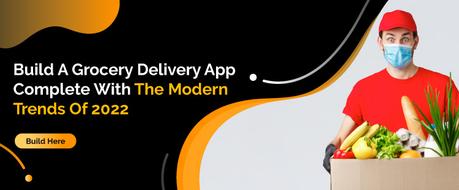A host of industries including the grocery retail industry has also gone through a tough phase in the past couple of years. 2021 had been tougher than 2020 as the uncertainty built over the past year prevailed through to the next year as well. Inflation and labour challenges among many others have been matters of great worry for everyone. Major changes in consumer spending and lethargy in managing the influence of the pandemic was the crux of businesses last year..
The pandemic hasn't gone anywhere and we're moving into the mid-of-2022 with the same uncertainty and challenges that we faced for a couple of years now. A raging variant looking to stamp its authority is a matter of grave concern. However, with an optimistic mindset and new hope we may see positive growth in e-commerce services, digital ad-space, and other personalised industries.
Retailers step into 2022 with empty shelves and inflation due to supply chain shortages. Struggling to cope with perennial shortages and demands, companies and grocers are left with no choice but to increase prices, infuriating consumers all the more.
Experts and masters of the industry have pointed to several trends that pose a possibility of changing the retail industry ecospace in 2022. These points are made in consideration of people's demands during the pandemic and emphasise the future of grocers.
Possible Trends In Grocery Retail Industry In 2022
Changing Consumer Demands & Sustainability:
With an increase in demand for sustainable and recyclable items, the retail industry has to consider evolution. In the United Kingdom and the United States of America, experts in the industry have observed a drastic change in industry trends.
The year 2022 has seen people wanting eco-friendly products more than ever. Thus encouraging brands to prioritise sustainability to hold their position in the market.
Faster, The Better
With the inception of rapid fast deliveries in Europe and the United Kingdom, e-commerce dynamics have never been the same. The United States of America wasn't far behind and successfully rolled out similar platforms in 2021, catching the eye of the Gen Z and the millennial generation.
E-commerce saw a monumental decline in the beginning of 2021 after scoring a record high in 2020. The industry and retailers had to look for ways to counter the current scenario and come up with innovative solutions. The rampant growth of faster delivery services among top retailers was inevitable.
The modern-day consumer expects deliveries within 30 minutes leaving retailers and grocers no other choice than to meet with their demands. Almost every retailer and grocer must initiate a long-term plan that takes into consideration the instant delivery problem irrespective of where the delivery location lies.
2022 could in all probability be the year of quick-commerce startups. The local, convenience, and traditional stores pose a stern challenge although it needs to be seen what impact the quick-commerce startups will have on the market.
Introduction To Automation To Counter Labour Deficiencies:
With the shortage of man-power has been creating serious issues in most domains. The grocery retail industry requires immediate modifications to keep up with the flowing in-store and digital business. The introduction of automation technology is imminent and the need of the hour. Be it the warehouses or the stores upfront, automation technologies can help manage the workload immensely.
Businesses must start implementing and investing in automation technology to set up self-checkout kiosks and aisle-scanning robots for quicker checkouts. Additionally, various types of equipment that can help customers pick up items and scan them when they're done shopping will help businesses offer a better life to their workers. It will also improve customer experience and satisfaction.
Intelligent Use Of Consumer Data in The Grocery Retail Industry
With the rise of online businesses, utilising customer data to improve services provided has become a must. Customising the shopping experience, offering better and suitable alternatives for items that are not in stock are areas that need attention to maximise customer satisfaction.
2022 might see a rise in this trend where businesses utilise consumer data to provide the ultimate shopping experience.
Convenient & Fresh Meals
The last few years have seen grocers improve their meal selections significantly to compete with meal delivery services and restaurants by implementing several tools for the same. Ghost kitchens are prime examples of such futuristic approaches.
Instacart has introduced numerous readymade meals that get them delivered faster, all thanks to their new hub. This hub is dedicated to serving and delivering readymade meals from the stores via the application to the customer. It has been there for over two years however it was never highlighted enough or made visible like it is now.
Loyalty And Growth Are Partners
With customer demands and market trends changing rapidly, brands must find ways to emotionally connect with customers. Acquiring new customers may be a priority but brands must equally focus on retaining existing customers as loyalty is the way to adopt going into 2022.
Flexible offers, payment methods, products that focus on almost every age group are ways brands must look to maintain and manage their market reputation. The pandemic has seen a tremendous surge in online shopping with customers shifting to online platforms for nearly any product or service.
Therefore, satisfying existing customers first and then focusing on gaining new clients is the way to go. In this modern age when the retail industry has taken on technology to improve most of their activities, yet have to rely on building brand trust and customer loyalty.
Expansion In Retail Media Networks
Several experts believe 2022 will see grocers and e-commerce platforms pile up their retail media networks and reach newer heights. Companies like Albertsons and Kroger have already introduced similar programmatic marketplaces for numerous advertisers, and have started touching levels of success they never imagined before.
The big players in the retail industry have started leveraging customer data to manage their advertisements and brand spending smartly. The cost to retailers is finding out ways to utilise the online relationships they have built with customers and to build a customer-centric e-commerce operation.
Premium Is On Everyone's Lips
Despite the global economic crisis due to the pandemic, premium products have seen immense growth in sales and popularity. Premium meal items are selling in volumes and the consumer demands have been a record high.
Thus, it can be said that the retail industry will benefit hugely due to the growth in sales of premium products and services.
The B2B Code Cracked
Sales, corporate clients, school districts, and other non-consumer entities have typically been the green-eyed-groups of foodservice companies like US Foods and Sysco. But the growth of e-commerce has levelled the competitive playing field. Thereby allowing grocers to turn their digital playbooks toward a new set of business customers.
In contrast to the previous decade or the last few years, the B2B market in the retail industry has been making some noise. The growth of e-commerce has helped in the same regard as customers now feel it's safer and more efficient to order online.


